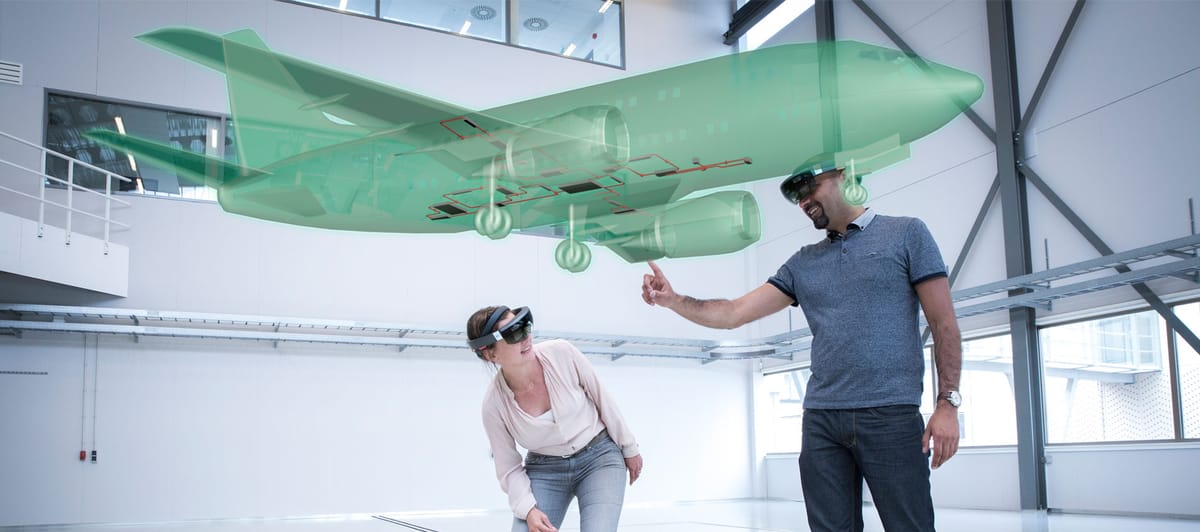Augmented Reality taking off in MRO training

Embarking on an immersive journey alongside fellow trainees and instructors, exploring a three-dimensional aircraft model, zooming in on intricate components, and meticulously examining system behavior and faults is now achievable through an innovative training approach utilizing augmented reality (AR). This cutting-edge training methodology, developed and rigorously tested by NLR in collaboration with KLM Royal Dutch Airlines, offers numerous advantages. Beyond its inherent appeal, this AR-based training proves to be more effective and efficient, fostering active engagement among trainees, collaborative learning experiences, deeper insights into system functionality, and enhanced practical application of acquired knowledge.
What is the optimal approach for aviation mechanics to acquire aircraft maintenance skills? Is it the conventional classroom method, where an instructor employs PowerPoint slides to illustrate the technical aspects of an aircraft, as commonly practiced in many training schools? According to Anneke Nabben, a training specialist at NLR, there are now more effective teaching methods. "Students who are merely required to listen tend to lose focus quickly and struggle to absorb the material. This is because they lack active engagement and opportunities for discussion," she explains.
Use of multiple HoloLens for collaborative training
Utilizing multiple HoloLens devices for collaborative training, Nabben collaborated with KLM to develop an innovative maintenance training program that surpasses existing methods in terms of efficiency and effectiveness. NLR advocated for the use of HoloLens, augmented reality goggles, in a collaborative setting—a relatively underexplored approach. These goggles allow trainees and instructors not only to interact with each other but also to examine a hologram of an aircraft. Crucially, this approach encourages active and interactive involvement with the subject matter. Trainees can navigate a 3D model of a real aircraft, identify and activate specific parts, and engage in discussions. NLR exemplified this innovation by detailing the workings of an aircraft system, specifically the air conditioning pack.

Anneke Nabben at the NLR X-Lab
3D demonstrator
Focusing on cultivating understanding rather than rote memorization, Nabben shares, "We designed tasks to promote collaboration among students, and the instructor actively conveyed the subject matter to facilitate easier absorption." Technical support for this collaboration involved connecting multiple HoloLens goggles, providing each participant with a unique perspective and a sense of being in front of an actual aircraft.
The versatility of a 3D virtual aircraft extends to both theoretical and practical training. NLR can model complex mechanical systems, including those impractical to demonstrate on the ground, such as the landing gear. Virtual simulations can replicate normal and abnormal aircraft behavior, accessible anytime and anywhere without wear and tear. The ultimate goal is for students to practice repairs using the 3D model without causing damage, eliminating the need for a physical aircraft and allowing normal flight operations to continue undisturbed.
More interesting and more motivating
Seeking to enhance the system knowledge of maintenance mechanics through more efficient training, NLR compared groups trained with HoloLens and traditional methods. Evaluation results showed heightened interest, innovation, and excitement among the HoloLens-trained group. They outperformed in the final test, demonstrating a better understanding of the air conditioning pack's functionality. The HoloLens approach facilitated an easier transition to real-life situations, providing improved insights into aircraft airflow, and fostering enhanced collaboration among colleagues. The modernized HoloLens training not only increased student motivation but also streamlined the transition to real-life maintenance scenarios, reducing the overall training duration.
